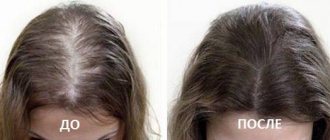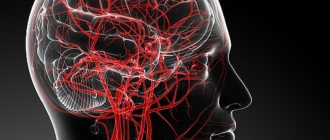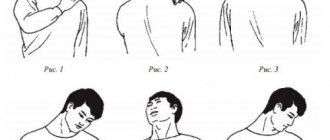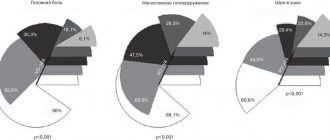Osteochondrosis is currently extremely common. In Russia, more than 60% of people over 50 years of age suffer from it; today it is often diagnosed even in children and adolescents. With this disease, degenerative processes develop in the intervertebral discs, which leads to pathological changes in the musculoskeletal and nervous systems. Everyday pain in the back and neck limits the motor activity and ability to work of a patient with osteochondrosis. This disease can cause constant psychological stress, migraines, numbness of the limbs, and increased fatigue. Fortunately, currently, those suffering from osteochondrosis have access to highly effective treatment of the spine using kinesitherapy, which includes sets of exercises for the development of the musculoskeletal system, adaptive and articular gymnastics and special massage.
What is unacceptable to practice with osteochondrosis?
People diagnosed with this pathology should refrain from the following actions:
- Lifting and carrying heavy objects, especially on the back. If it is not possible to completely abandon such work, then when lifting massive things you should not tilt your head or bend your back too much.
- Long-term work in a bent position (for example, on a plot of land or when cleaning a room).
- Sharp, impetuous and careless movements, accompanied by crunching in the joints and spine. They can cause complications of osteochondrosis and damage the contact surfaces of the vertebrae.
- Using a high or uncomfortable pillow for night rest. This is even more dangerous with cervical osteochondrosis. With an incorrect and tense posture during sleep, the back muscles become tense, the pain worsens, and the spine, being curved, continues to deform.
- Sleeping on a too soft bed (sofa) and mattress. The bed in patients with osteochondrosis should be quite rigid.
- Binge eating. Body weight above normal in osteochondrosis is a significantly aggravating factor for the course of the disease. Therefore, you should lose excess weight as quickly as possible.
- Wearing uncomfortable high-heeled shoes. It does not allow you to fully rest on your feet, which aggravates the curvature of the spine and leads to the development of osteochondrosis. With this disease, it is necessary to ensure correct posture; for this, in particular, you should use comfortable low-heeled shoes.
- Overloading the back during exercise in the gym. It is worth noting that strength exercises during the treatment of osteochondrosis or during the rehabilitation period after it should be carried out under the supervision of a specialist.
Those suffering from this disease should not indulge in foods and drinks high in caffeine, as this alkaloid removes calcium from the body. Also, with osteochondrosis, you should not abuse alcoholic beverages, which contribute to the occurrence of edema in the spine and the removal of mineral substances from the bones.
Exercise for the mind
Many parents see the reason for their children's school failure in high academic loads. “A child is asked so much, he simply doesn’t have time to remember everything!” “Failed again in dictation! But we prepared at home, learned all the rules. Where does such inattention come from?!” Of course, in some cases the problem is laziness and a child’s lack of interest in learning. However, experts who study brain processes say that there is no such thing as poor memory and inattention. It's all about the inability to train them. Today there are special sets of gymnastic exercises for training and effective development of cognitive functions. What kind of exercises are these? How to master them? Let's talk about this.
Scientists have proven that our brain is very flexible and plastic, and our memory is truly limitless. Throughout life, some connections in the brain constantly die off and other, new, connections are formed again.
It is the brain that ensures the optimal functioning of processes such as memory, attention, perception, thinking, speech. Moreover, all these processes tend to develop dynamically in favorable conditions and deteriorate in damaging situations. The latter include neuropsychological stress at school.
Indeed, the intensity of the modern educational process requires the student to fully devote himself in terms of cognitive, or educational, activity (from the Latin cognitio - “cognition”).
“And if we also take into account the high level of morbidity among today’s schoolchildren, it becomes clear that the student cannot always cope with the workload offered to him,” notes neurologist Elena Vasilievna Kovaleva.
Problems with academic performance associated with poor readiness of the cognitive sphere manifest themselves in the process of study in the form of poor memory, impaired memorization, decreased attention, increased fatigue and decreased motivation for cognitive activity. Such children miss letters in dictations, do not count well orally, and cannot maintain attention throughout the entire lesson.
How can you help your child become more attentive, learn to focus on important things and make the most of his memory resources? It turns out there is a very effective way to do this. As a specialist, Elena Kovaleva sees a solution to the problem in special brain training:
By incorporating cognitive gymnastics into the learning process, we can activate the mind-body system and improve the child’s ability to learn.
Performing special exercises leads to the restoration of interhemispheric connections, improvement of the psycho-emotional state, and stimulates the development of cognitive functions. Properly organized movements help create new neural networks and, accordingly, expand the reserve capabilities of the brain. At the same time, the exercises are quite simple and understandable, so they do not tire the child and do not burden the learning process.
Cognitive gymnastics exercises are based on the Brain Gymnastics program, developed in the 70s by the American scientist Paul I. Dennison for underachieving children.
The remarkable thing is that this set of exercises allows you to improve the child’s condition and performance at school without any medication load on the growing body. Note that classes provide both immediate and cumulative effects. And the greatest results can be achieved if you perform the complex accurately and systematically.
Comparative diagnostics before and after performing the complex confirms that children have improved memory, attention, speech, increased performance and reduced fatigue.
Dennison hooks
The exercise should be performed before a lesson, test, exam, public speaking, when you need to calm down and make the right decision, as well as in a state of excitement or depression. The exercise harmonizes emotions and thinking processes, eases mental stress, promotes adequate actions and behavior, helps to perceive new things. information, to better understand the point of view of another and your own, consists of two parts.
Part 1.
Stand with your legs crossed. In this case, the feet rest firmly on the floor. Extend your arms in front of you parallel to the floor. Cross them so that your palms meet each other and interlock your fingers. Bend your elbows, turn your hands inward and press them to your chest so that your elbows are pointing down. Press your tongue against the hard palate just behind your upper teeth. Raise your eyes upward and keep your gaze in that direction. The chin is lowered, the head is not raised. Breathing is calm, body is relaxed. You may sway slightly - this is a normal reaction of the body. If the shaking is strong, it is better to sit in the same position.
Part 2.
Place your feet parallel. Open the hand lock, lower your arms and connect the fingertips of both hands with each other. Place them so that the joined thumbs are parallel to the floor and the rest are pointing down. The exercise takes two minutes or more. Now you need to look at the floor, but don’t lower your head. The tongue still rests on the hard palate. Stay there, relaxed, a little longer.
Cognitive gymnastics
It is a set of special exercises, during which a connection is established between the kinesthetic, visual, optomotor and auditory systems. In addition to cognitive gymnastics, the Center uses:
- transcranial magnetic stimulation of the brain can significantly improve the conduction of nerve impulses along the cortical pathways.
- electropulse therapy - electrosleep. The therapeutic effects of electrosleep include anti-stress, sedative and stimulating effects that increase overall vitality.
Massage of back and head muscles
Massage techniques stimulate and increase the tone of the central nervous system, have a relaxing effect, which has a positive effect on the activity of all physiological systems of the body.
Homeopathy
Homeopathic medicines are selected for each specific case according to the law of similarity, taking into account the patient’s condition, his constitutional and psychological type, hobbies, mood, eating habits, favorite sleeping position, dependence of complaints on the time of day, cold or heat, dampness, food intake and many other individual characteristics.
Training for atherosclerosis
With this disease, exercises to improve blood circulation in the brain will be especially useful. Recommended:
- Run.
- Walking.
- Climbing stairs.
- Body tilts.
Balance training exercises:
- Turns the head with 2-3 second fixation in the accepted position.
- Lying on your back, straighten your legs, extend both arms. Clench your hands into fists, then slowly relax. 5 times is enough. Make circular movements with your brushes 5 times in one direction.
- Lying on your back, bend your elbows as you inhale. As you exhale, straighten. 5 times is enough.
- Lying down, bend your leg and straighten it. 2 movements are enough. Change legs and perform the same exercise. Then bend your legs alternately. 2 times is enough.
You can do gymnastics using dumbbells. You can’t set yourself a fast pace and overload your body with exhausting exercises. The duration of classes and physical activity should increase gradually.
Healthy neck vessels are the key to good health
The neck is an extremely important part of the human body. It is here that the vital arteries are concentrated, through which the blood supply to the brain and spinal column occurs. Weakened neck muscles force a person to constantly strain to keep their head and back straight. This tension leads to compression of blood vessels and pinching of nerve endings. Hence - impaired blood circulation, headaches, high blood pressure and other unpleasant symptoms.
By strengthening the neck muscles, you can restore the blood vessels in the neck and thereby get rid of ailments. Among the exercises, the main place is occupied by turns, tilts and rotations of the head. All movements should be performed extremely smoothly, not forgetting to monitor proper breathing. Chinese gymnastics, where there are no sudden and active movements, gives good results. Exercises for neck vessels and muscle strengthening can be performed both at home and at work - you do not need a specially equipped place for this.
Exercises to strengthen neck muscles
- Stand against a wall, trying to keep all parts of your body pressed tightly against the vertical surface. As you inhale, push yourself into the wall with all your might, tensing your neck muscles as much as possible. Hold your breath and maintain this position for 5-6 seconds.
- Sitting on a chair, you need to place your palm on your forehead and press hard, forcing your head to lean back. At the same time, straining your neck, you should resist the forward movement of your head. Such a “confrontation” with maximum tension should be held for 5-7 seconds, while breathing should be suspended. After the time has passed, exhale and rest for 10-12 seconds. Repeat movements 3 to 7 times.
- Similar movements are made with the head tilted forward and to the sides. This gymnastics is good because you can perform 1-2 exercises every hour during the day - this is extremely useful for dilating the blood vessels of the neck and brain.
- Slowly rotate your head in a semicircle, from one shoulder to the other, holding it in extreme positions. Repeat 8-12 times, gradually increasing the amplitude.
Video: exercises useful for VSD
How to get rid of cerebral vascular spasms
Poor circulation and vascular dystonia are the reasons why cerebral vascular spasms occur. The clinical manifestations of spastic attacks are familiar to many. This
- Regularly occurring headaches, dizziness, changes in blood pressure;
- Nausea, disturbances in speech and coordination of movements;
- Tinnitus, memory impairment;
- Fatigue and a sharp decrease in performance.
Vasospasm can be triggered by a stressful situation, changes in atmospheric pressure, or chronic diseases of the spine (osteochondrosis, for example). To minimize the risk of spasms, it is necessary to strengthen the blood vessels of the brain. This will be helped by a healthy diet, adherence to a work and rest schedule, medicinal herbs and special exercises.
To improve blood supply to the brain, daily gymnastics should include movements that require changing the position of the head - bending from side to side, rotating the head, flips and somersaults. When performing exercises, you must monitor your breathing and perform head movements smoothly, without jerking. If unpleasant sensations, darkening in the eyes, or severe dizziness occur, gymnastics should be interrupted and resumed after a short rest, reducing the intensity of movements.
A set of exercises to improve blood flow in the brain
- Performed standing, feet shoulder-width apart. Rotate your head clockwise and back for 2-3 minutes.
- I.P. - Same. Raise your hands up, interlace your fingers. Lean forward while performing “chopping wood” movements. Repeat 8 times.
- I.P. - Same. Swing your legs alternately: the left leg goes to the right hand, the right leg goes to the left hand.
- I.P. - the same, knees slightly bent. Stretch your arms to the sides and perform asynchronous rotations: rotate your left hand forward, your right hand back. Exercise improves memory and speed of thinking.
- I.P. – lying on your back, legs and arms extended along the body. Raise your legs straight as high as possible, supporting your lower back with your hands. Perform the “Birch” stand for up to 5 minutes.
Excellent gymnastics for the blood vessels of the brain is dancing. By performing dance steps, a person trains coordination, the blood is enriched with oxygen, and its circulation improves. Brain vessels become more elastic, their tone decreases. In addition, dancing is a great way to relieve emotional tension and get rid of stress. And this is a very significant factor in the improvement of brain vessels.
Video: a simple exercise to strengthen weak blood vessels
Research on stress and brain health
A study conducted at the University of Texas Health Science Center at San Antonio found that high levels of stress can increase the risk of memory loss and brain atrophy as early as middle age. These results are based on a study of more than 2,000 men and women who had no symptoms of dementia at the start of the study. All subjects were part of the larger Framingham Heart Study, a long-term health research project involving Massachusetts residents.
Participants went through a series of tests, taking part in several psychological examinations that assessed their cognitive abilities. About eight years later, when the average age of the volunteers was just 48, follow-up testing was conducted. During these sessions, blood samples were taken before breakfast, on an empty stomach, to determine serum cortisol levels. In addition, brain scans were performed using MRI, and the same series of psychological tests carried out years earlier were repeated.
Types of asanas for developing the mind
To increase concentration, yogis use inverted asanas. They stimulate blood flow to the head and provide increased oxygen supply. A headstand works best for this task, but it is difficult for a beginner to perform it correctly. Simpler asanas are more suitable for beginners.
Exercises to increase blood flow to the brain:
- Prasarita padottanasana. This pose is simple and stable; it will not cause difficulties even for people with weak muscles. You need to stand up straight and spread your legs wide. Place your hands on your hips and lean forward, trying not to arch your lower back. If your spine is flexible enough, you can lean deeper and place your hands behind your back.
- Adho mukha svanasana. This is a basic asana that must be mastered to fully practice yoga. It is included in the morning set of exercises “Sun Salutations”, which is useful to perform daily. Adho mukha svanasana relieves fatigue and slows down the heartbeat. You need to stand straight, place your feet shoulder-width apart. Slowly lean forward without lifting your feet from the floor. Place your hands on the floor, do not bend your elbows. Legs should remain straight. At the initial stage, you can not touch the floor with your palms, but lightly reach with your fingertips.
- Shavasana. This asana promotes complete relaxation. It should be performed last in order to restore the normal movement of energy flows. You can perform shavasana separately from the general complex to relieve stress and fatigue. You need to lie on the floor, spread your arms and legs slightly to the sides, and close your eyes. You need to breathe slowly and deeply, try not to think about anything. Alternately imagine how the muscles of the body relax, from the toes to the very top of the head. When a feeling of pleasant lightness appears in the body, you can finish the exercise.
Lying asanas should be performed only on the floor. In order not to freeze while fixing the asana, you should lay a mat on the floor, and you can cover yourself with a blanket on top.
Tips for Beginners
To make the exercises easy and bring only benefits, you need to follow the rules of safe exercise:
- exercise only in a good mood;
- ventilate the room before classes;
- When performing exercises, do not be distracted by extraneous thoughts;
- while performing asanas, do not overexert yourself and prevent pain from occurring;
- If classes cause discomfort, you should stop and choose a different technique.
You need to end the lesson with complete relaxation. After a burst of activity, the brain needs to return to normal operation, otherwise the person will quickly become overtired. This can lead to the development of insomnia and neurosis.
The power of inverted asanas
At the energetic level, inverted asanas allow you to temporarily change the direction of a person’s vital energy to the opposite direction to its normal flow. Yogis say that while a person stands on his feet, he ages, and when he turns upside down, he rejuvenates. At the physiological level, performing inverted asanas, first of all, improves blood supply to the brain. Thanks to gravity, blood rushes to the brain, saturating it with oxygen, cleansing cells of toxins and improving coordination between parts of the brain. Additional blood supply to the pituitary gland increases the efficiency of its functioning.
How to train the heart and blood vessels?
In order to keep the blood vessels and heart in good condition for a long time, you need to pay maximum attention to their regular training. This is especially true for older people who, due to age, have reduced physical activity. A sufficient amount of oxygen and feasible physical exercise - this should not be forgotten by older people.
Training the heart and blood vessels should begin in the morning, immediately after waking up. Rotating your hands and feet is an exercise that will make your blood flow “wake up” and the blood vessels will dilate. Bends, squats and turns of the body must be performed while constantly monitoring the heart rate. If the pulse of an untrained person is within 90-100 beats per minute, then his heart still does not receive enough oxygen and blood. As the degree of general physical activity increases, the heart rate also increases. Accordingly, the heart works more efficiently and receives a sufficient amount of blood due to the good functioning of the aorta.
Several exercises for the heart and blood vessels
- Rise on your toes and walk with your knees raised very high.
- The legs are at shoulder width. Hands rise upward, clasping hands together. When the body tilts to the right, the right leg is moved to the right. Try to perform the tilt as deeply as possible. Repeat the same movements to the left side. Perform 8-9 times, remembering to control your breathing.
- Extend your arms to the sides and rhythmically clap your palms on the opposite shoulder. Right hand - left shoulder, and vice versa. Keep your body straight. Increase repetitions and tempo in the absence of unpleasant sensations in the heart area up to 50 times.
- Place your arms along your body, legs pressed tightly against each other. Make a full circle with your hands: back - up - forward. First carry out the rotation cycle in one direction, then change the direction to the opposite. Repetitions – from 10 to 50.
- Lying on your back, you need to raise your knees bent at an angle of 90° and imitate the movements of riding a bicycle. Do not hold your breath.
- While in a lying position, raise your outstretched legs to a height of 30-40 cm and make cross-shaped movements. Repeat 20-25 times.
Swimming, cycling, cardio exercises, and walking up the stairs help to actively train your heart. Just one thing should not be forgotten: the load should increase gradually. The main thing when doing exercises is not their quantity and intensity, but regularity. A strict cycle must be observed: load and relaxation. Then the muscle fibers of the heart will increase, the heart muscle and blood vessels will strengthen, and the benefits of training will become obvious.
Video: exercises to improve the cardiovascular system through muscles
Capillary training is a prerequisite for improving the vascular system
The smallest blood vessels are capillaries.
They are responsible for the life of every cell of the body, delivering nutrients to it and freeing it from decay products. Capillaries permeate the entire human body, their total “length” is at least 60 thousand kilometers. If an obstacle is encountered in the path of blood flow in the form of an extremely narrowed vessel, then in the nearest cells there will be an accumulation of toxic decay products that will not be eliminated in a timely manner. This will lead to disease not only in the cardiovascular system, but also in other vital organs. The Japanese scientist and healer Katsuzo Nishi called blood the “river of life” and created an entire system for healing the body through training capillaries and exercises to strengthen blood vessels:
- The simplest but most effective technique that can improve the condition of capillaries and blood circulation is vibration exercise. You need to do it in the morning, without getting out of bed. Raising your legs and arms up, you should simply shake them finely and frequently for 1.5 - 2 minutes. In addition to a kind of vibration massage of the capillaries, there is also a redistribution of lymphatic fluid, which helps cleanse the body of toxins and waste.
- Another exercise from Nisha’s arsenal is “Golden Fish”. Lying on a flat bed, you need to put your hands under your neck at the level of the fourth cervical vertebra, pull your toes towards you, and, straining very hard, reproduce small vibrating movements with your whole body, like a fish. This exercise helps get rid of excessive tone of the nerves located in the spine and promotes active blood circulation.
You need to train capillary vessels regularly, repeating the exercises twice a day - in the morning, after waking up, and in the evening.
Video: a set of exercises according to the Nishi system
What is yoga?
Translated from Sanskrit, yoga means “unity, union.” This implies the unification into a harmonious connection of three principles: physical, mental and spiritual. To do this, they resort to a system of gymnastic and breathing exercises, relaxation and meditation methods.
It is a mistake to believe that yoga is a religion. It refers to a philosophical movement that forms a certain attitude towards the environment and puts thoughts in a good mood. For this practice, there are some nutritional recommendations that help improve metabolism and overall well-being. But they do not require unquestioning execution and acceptance of vegetarianism. Everything should happen based on the needs of the body, the sensations that are born in a person.
The basis of the exercises is stretching. Therefore, beginners are encouraged to start with the simplest poses - asanas. But stretching is not the main goal. It helps relax muscles, teaches you to work with breathing, and puts your thoughts in order.
Effective medications for the treatment of hypertension: groups of drugs, recommendations.
All about herbs for blood pressure: action, analogues of drugs.
Benefits of exercise for improving blood circulation
Impaired blood circulation leads to oxygen starvation of the brain and a decrease in its functioning. Insufficient supply of nutrients is caused by a narrowing of the lumen of the vessel, which is a dangerous complication in the form of a brain stroke.
Gymnastic exercises have a positive effect on the vessels of the head, restoring their physiological tone and elasticity. Gymnastics is often prescribed in combination with drug therapy and has no age restrictions.
The effect achieved with regular exercise:
- Treatment and prevention of cognitive impairment (memory, mental performance);
- Reducing the risk of thrombosis and stroke;
- Improving coordination in movements;
- Relief of pain (with osteochondrosis of the cervical spine);
- Restoring vision.
Impulses coming from the nervous tissue of the brain help maintain muscle tone in the vascular wall. Performing exercises helps improve blood circulation, which is provided by neural connections - daily exercise affects the formation of new biological neural networks.
Therapeutic exercises are also indicated for the development of the cerebral hemispheres; new neural formations ensure synchronous functioning of the entire brain. Gymnastics helps to activate important skills:
- Ability to concentrate;
- Select important information from the received voluminous material;
- Quickly understand the essence of what is said;
- Increases learning ability.










